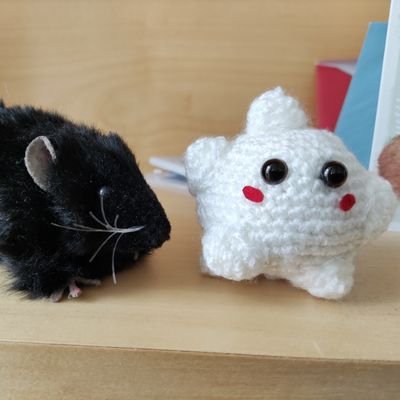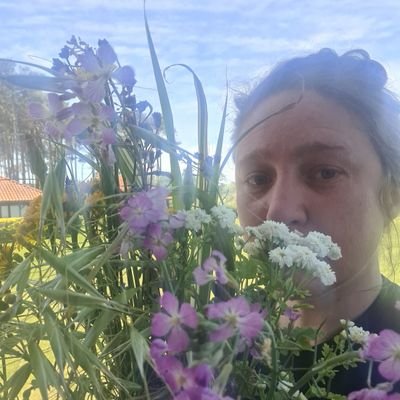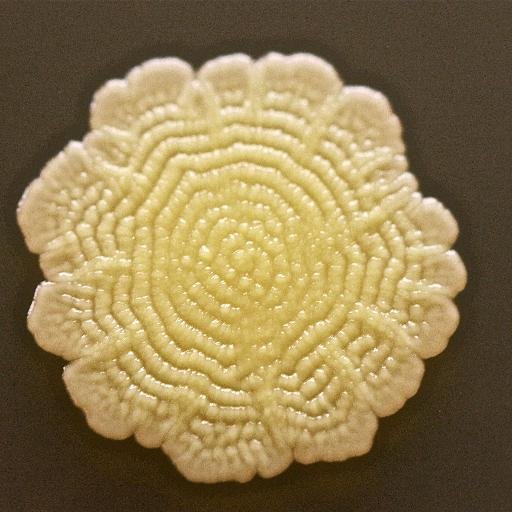
Contamination Club
@ContamClub
Followers
11K
Following
2K
Media
198
Statuses
2K
One of the greatest discoveries in microbiology came from contamination. Join the club and share yours here 🦠🧫 logo by @sylsyltong
Joined August 2019
🚨 Very excited to finally say… 🚨 The story of Noodlococcus - the contaminant that started ContamClub - is available to read 📖🍜🦠 Check it out ➡️ https://t.co/vZgaOPjKWo 1/15 🧵
1
29
118
😮💨 what a lovely lawn of marshmallows, unfortunately not Staphylococcus homonis.....
1
1
2
.@ErickaAndersen dissects Big Pharma's predatory advertising from a unique lense - as a former addict - and explains why banning direct-to-consumer Pharma ads is a critical step towards restoring public trust in health care.
0
0
4
Now published! 🎉🧫🍜 https://t.co/qVWDA4eFdz
🚨 Very excited to finally say… 🚨 The story of Noodlococcus - the contaminant that started ContamClub - is available to read 📖🍜🦠 Check it out ➡️ https://t.co/vZgaOPjKWo 1/15 🧵
0
6
25
Alright. I got one for @ContamClub. Stack of BHI plates held in a plastic sleeve for several months. I pull some out for lab and I am greeted to what can only be described as a chocolate donut with sprinkles.
1
4
12
Our AI-powered platform helps you deliver digital innovation faster and with less risk by providing a fundamentally better approach to test automation.
43
88
529
Noodlococcus was the contaminant we discovered on August 9th 2019, leading to the creation of ContamClub as a celebration of interesting contams! 🦠 Investigation of Noodlococcus resulted in some interesting findings about the Kocuria genus. Full story available as a preprint ⤵️
🚨 Very excited to finally say… 🚨 The story of Noodlococcus - the contaminant that started ContamClub - is available to read 📖🍜🦠 Check it out ➡️ https://t.co/vZgaOPjKWo 1/15 🧵
0
1
8
Happy Noodlococcus day to all those who celebrate! 🍜🧫🦠 We’re in 3 different continents now but all celebrating the 6th anniversary of the discovery of our noodle-y friend by eating some delicious noodles @pRobM91 @StanleyHoBio @GEMcCallum
1
3
23
Another beautiful contamination today! It looks like a small volcano 🌋 @ContamClub @UoBbiosciences
3
5
56
We built FXR Script to give indicator developers a new way to create, share, and reach traders worldwide. With a few lines of code, any trader can create world-class indicators for backtesting. Huge props to @outof0ptions for launching EIGHT new indicators directly on our
3
3
11
@ContamClub some flowers bloom in summer (and in LB with kanamycin + ampicillin)... Found by @Alix_Lee38
0
4
13
When things go wrong, there is always a silver lining. How beautiful are contaminations? ❤️ @ContamClub #microbiology #science #AcademicTwitter
0
1
19
Labmate found this growing in autoclaved YPD (!) and it is now our new lab mascot. Just kidding, it’s gotten the bleach treatment it deserves. I think this qualifies @ContamClub
0
1
36
Pizza Hut’s future is uncertain. Yum! Brands is exploring a possible sale as the pizza chain struggles to keep pace with faster-growing rivals like Taco Bell and KFC.
18
14
80
#DescribeThatMicrobe Summer labs are in full swing as are demo plates with handprints! #Microbiology #SciComm @ASMicrobiology
@ContamClub
1
2
16
15/15 We’re so glad to finally have this out there, it has been a fun side project for us alongside our research since we discovered Noodlococcus in 2019 Hope you enjoy reading! Check it out at ⤵️ https://t.co/vZgaOPjKWo
1
0
7
14/15 All of these results came about from investigating a cool-looking contaminant. The Noodlococcus genome and our large-scale genomic evaluation can serve as a baseline for future studies into the distribution, diversity, and evolution of this ubiquitous species 🦠
1
0
4
13/15 The oldest strain in the K. pseudorhizophila strain was first isolated by William A. Randall in a 1949 publication, so we suggest that an appropriate species name for the K. pseudorhizophila clade would be Kocuria randallii
1
0
2
12/15 The lack of indication that these strains are genetically distinct from the reference genome for K. rhizophila may lead to conflicting results and inaccurate conclusions For example, this product is derived from a strain present in the K. pseudorhizophila clade ⤵️
1
0
2
A single device with infinite potential. Engineered for clarity. Built for every desk of distinction. Work smarter. Think sharper. Move faster.
15
2
10
11/15 Distinguishing these clades has important implications for the use of K. rhizophila strains as controls in research and industry There are several strains available in culture collections, with some located in the true K. rhizophila clade and some in K. pseudorhizophila 😵💫
1
0
2
















